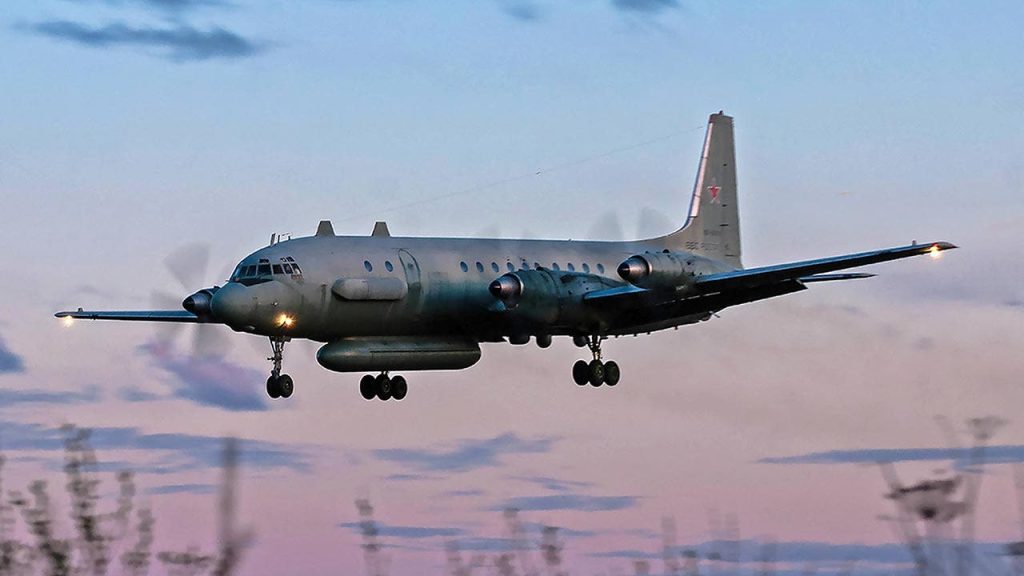U.S. Military Responds to Repeated Russian Surveillance Flights Near Alaska
In a series of recent events highlighting ongoing tensions between the United States and Russia, American military jets have been repeatedly scrambled to monitor Russian surveillance aircraft near Alaska. The North American Aerospace Defense Command (NORAD) reported that on Tuesday, they detected and tracked a Russian IL-20 COOT reconnaissance aircraft flying in the Alaskan Air Defense Identification Zone (ADIZ). This marked the fourth such incident in less than a week, following similar detections on August 20, 21, and 24. In response to Tuesday’s detection, NORAD deployed an E-3 Sentry early warning aircraft, two F-16 fighter jets, and a KC-135 refueling tanker to track the Russian plane as it traversed this sensitive region.
The Alaskan ADIZ, while technically international airspace, serves as a buffer zone where aircraft are required to identify themselves to protect national security interests. It’s important to understand that these Russian flights did not violate American or Canadian sovereign airspace, and NORAD has characterized such Russian activities as relatively routine occurrences that don’t represent a direct threat. Nevertheless, these incidents reflect the ongoing strategic chess game between major powers in the Arctic region, which has seen increasing military activity as climate change opens new shipping routes and access to natural resources. The Cold War-era IL-20 COOT aircraft being used by Russia is specifically designed for electronic signals intelligence gathering, suggesting these flights serve an information collection purpose.
The frequency of these recent incursions stands out, with four similar incidents occurring within a single week. This pattern follows several other encounters earlier in 2023, including incidents in July, April, and two separate occasions in February. During those February incidents, NORAD deployed F-35 Lightning II fighter jets to intercept a combination of Russian Tu-95 bombers and Su-35 fighter aircraft. In January, NORAD also monitored multiple Russian military activities in the Arctic region. This increased cadence of Russian military flights near North American airspace comes against the backdrop of heightened global tensions following Russia’s continued military operations in Ukraine and NATO’s response to those actions.
NORAD’s approach to these incidents follows a well-established protocol designed to protect North American airspace while avoiding unnecessary escalation. The command employs what it describes as “a layered defense network” that includes satellites, ground-based radar systems, airborne radar platforms, and fighter aircraft that can be rapidly deployed to identify and track unknown aircraft approaching sensitive areas. This multilayered approach allows NORAD to maintain constant vigilance and respond appropriately to any potential threats. The public statements released by NORAD about these incidents emphasize both their readiness to defend North American airspace and the routine nature of their response operations, striking a balance between transparency and strategic messaging.
These incidents near Alaska occur within a broader context of similar aerial encounters between Russian and NATO aircraft elsewhere in the world. NATO forces have recently scrambled warplanes in response to Russian aircraft operating near Romanian borders with Ukraine. Additionally, tensions have increased around Russia’s Kaliningrad enclave, situated between NATO members Poland and Lithuania on the Baltic Sea. Russian officials have expressed concern about NATO’s deterrence plans that could potentially neutralize Kaliningrad’s military capabilities more rapidly than in previous strategic assessments. These parallel developments suggest that aerial reconnaissance and counter-reconnaissance activities remain a significant component of modern great power competition, even in an era dominated by satellite and cyber intelligence gathering.
Looking at the bigger picture, these repeated surveillance flights demonstrate how traditional Cold War methods of gathering intelligence and projecting military presence continue to play a role in 21st-century geopolitics. Despite advances in satellite technology and cyber capabilities, nations still value the information gathered from aerial reconnaissance platforms and the strategic messaging conveyed by their deployment. The Arctic region, once a remote and inhospitable frontier, has become increasingly important strategically as climate change transforms its accessibility and resource potential. As both the United States and Russia enhance their military capabilities in the High North, these types of encounters are likely to continue as part of the complex dance of deterrence, intelligence gathering, and power projection that characterizes relations between these major military powers. While NORAD maintains that these incidents don’t represent immediate threats, they serve as reminders of the persistent tensions that define the current international security environment.











